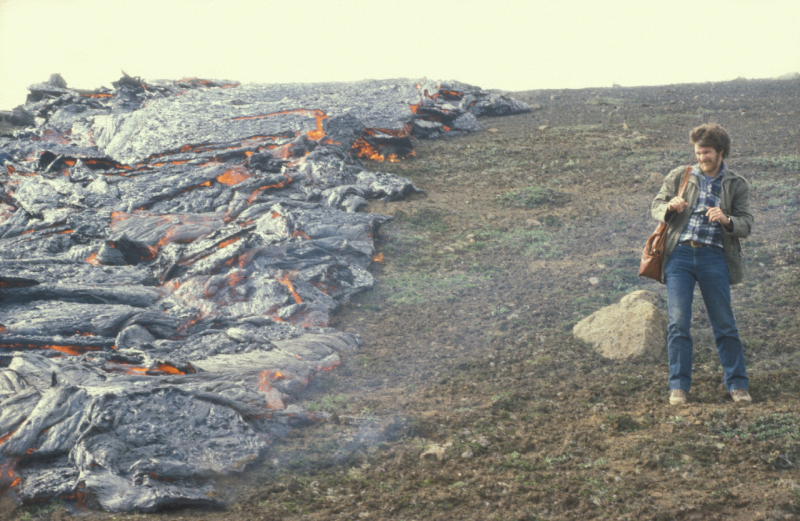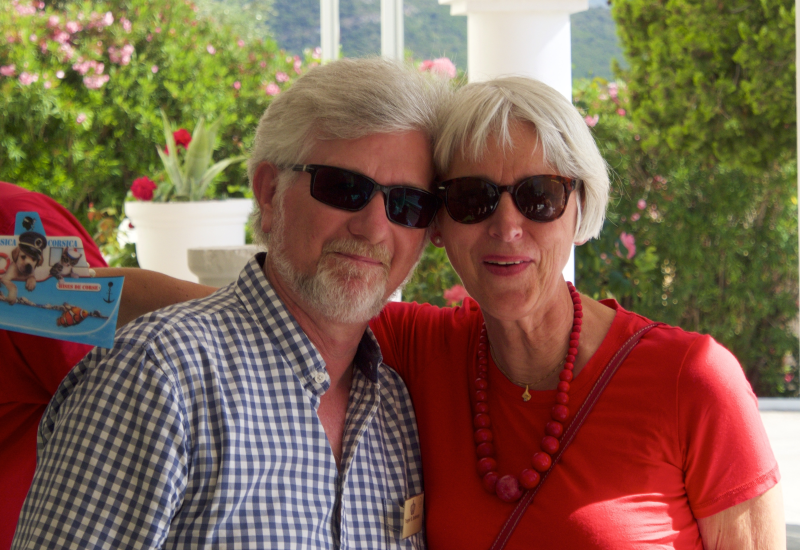Earlier this April, 14 Professors, Postdoc’s and PhD students from CEED travelled to Corsica to celebrate Professor Torgeir B. Andersen’s 65th birthday with a conference in his honour. In addition, a number of international collaborators and friends were there to celebrate and give exciting talks about the opening and closure of oceans, which has been Torgeir’s field of interest for many years. This also reflected the name of the conference: From Orogens to Rifted Margins (FORM).
Torgeir has worked at the University of Oslo since 1985 as a Professor in tectonics and structural geology, and has been a part of two Norwegian ‘Centers of Excellence’ hosted by the University; PGP (Physics of Geological Processes; 2003-2013), and now CEED (Center for Earth Evolution and Dynamics; 2013-2023).

Photo: Private
The first day started with an icebreaker party in wonderful surroundings in the city of St. Florent. Surprisingly enough, the day of the icebreaker party was also Torgeir and his wife, Marie’s 36th wedding anniversary - it was celebrated properly with cake and Corsican wine.

Photo: Johannes Jakob
The next day was the first day of talks starting with CEED’s founding Director Trond Torsvik giving a summary of Torgeir’s life and career so far. Turns out they actually went to same elementary school in Bergen! The rest of the morning was dedicated to the Wilson Cycle addressing issues such as the pre-Caledonian margin of Baltica, the role of rift inheritance and passive margin formation.
Throughout all of Torgeir’s career and research, one thing in particular has been extremely important: Fieldwork! I have personally noticed that during the course of my Ph.D., Torgeir always has been a steady rock when it comes to fieldwork. The main reason the FORM conference was held in Corsica was because Torgeir had previously undertaken field work there trying to understand the nature of deep, subduction related earthquakes and also the geology of Alpine Corsica. So, with the sun shining from a blue sky we headed out into the field with Frederic Gueydan (University of Montpellier) and Per Terje Osmundsen (NGU, and Torgeir’s first Ph.D. student) as highly competent field guides. The first stop was to look at high pressure/low temperature jadeite bearing orthogneiss with beautiful Fe-rich, deep blue mafic lenses and a fantastic view of the St. Florent basin.
The next stop on the conference field trip proved to be a bit more challenging. After an easy stroll on a dirt road to look at pseudotachylites in mantle rocks, the decision was made to look at some even more spectacular pseudotachylites, the only issue was that we had to cross several hundred meters of maquis, the treacherous Corsican bush. After almost being engulfed and consumed by the thorny, 3 meter tall maquis, everyone made it back to the shores of Golfe de Saint-Florent for lunch and some also a lunch-swim to cleanse their maquis wounds. The two last stops of the day were the infill of the St. Florent basin, with spectacular upward coarsening sequence of sandstone and biosparitic limestone and the multiple reactivated fault that (possibly) controlled the architecture of the basin. And in the true spirit of Torgeir and field work, the day ended with a stop at the Clos Santini for some proper wine tasting!

Photo: Hans Jørgen Kjøll
The last day of the conference was dedicated the final stages of the Wilson cycle, which Torgeir dedicated much his career to explore in the Western Gneiss Region of Norway. Several exciting talks were given looking at field and modelling examples from all over the world by Torgeir’s former students and collaborators.
In the end, Torgeir gave his concluding remarks showing some examples of the research he had been doing so far in his career. The number of students and collaborators was astonishing and it goes to show us young aspiring scientists what can be achieved through hard work and collaboration with people from all over the world.
Congratulations again from all of CEED!




